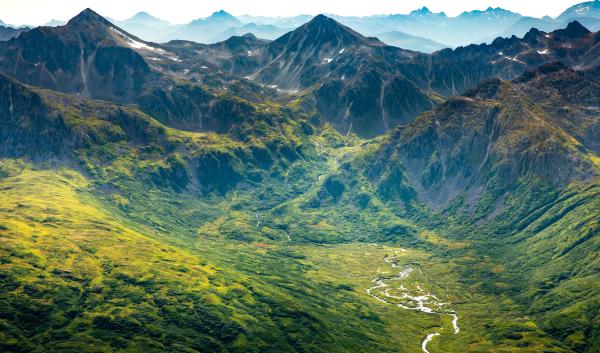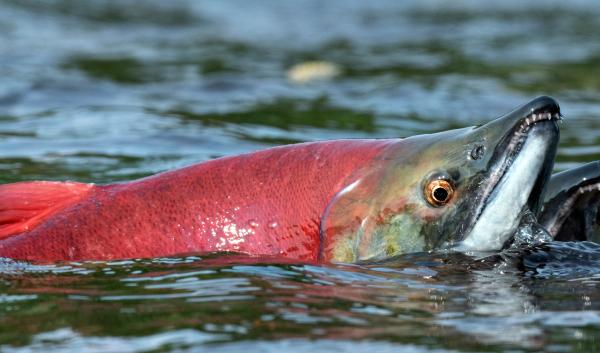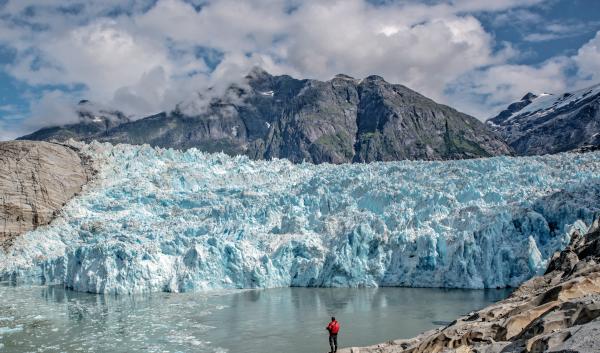Reading Time: 4 minutes

A dramatic rise in water levels began on August 6th, 2024, along the Mendenhall River near Juneau, Alaska. Within hours, the river surged past its previous record of 14.92 feet, cresting at a staggering 15.99 feet near Auke Bay. The unprecedented flooding and erosion that followed, which inundated streets and damaged homes and vehicles, originated from a glacial lake outburst flood (GLOF) in Suicide Basin, located on the Mendenhall Glacier. While GLOFs were uncommon on the Mendenhall River prior to 2011, Suicide Basin has produced a GLOF nearly every year since then, including one that occurred in 2023 almost a year to the day before the flood in 2024.
GLOFs, also known as jökulhlaups, occur when a glacial lake breaches its dam. When glacial dams rupture, resulting floods can inundate nearby towns and infrastructure in a matter of hours. In parts of Alaska, these floods may pose a significant threat to human health and safety in communities that are downstream of glaciers. GLOFs can also damage infrastructure (e.g., buildings, roads, airstrips, and hydroelectric dams) and degrade habitat.
Climate change is leading to rising temperatures and reduced snowpack, causing Alaskan glaciers to melt at some of the fastest rates on the planet. These changes could cause glacial lakes to form in new areas and weaken the stability of ice dams. However, rapid glacial melting could reduce the size and severity of glacial lake outburst floods over time by thinning the glacial dams.
Why do glacial lake outburst floods occur?
Glacial lakes form when part of a glacier melts, leaving a depression that can fill with water. The glacier itself can act as an ice dam, blocking runoff and forming a glacial lake. Moraines (masses of rock and sediment carried and deposited by a glacier) can also act as dams. Although moraine-dammed lakes are far more common in Alaska than ice-dammed lakes, ice-dammed lakes are responsible for many more glacial lake outburst floods. This is because ice dams can fail, reform, and fail again many times. Unlike ice dams, moraine dams usually drain only once because the initial drainage event can destroy the dam itself. Ice dams can fail without warning when the water pressure exceeds the ability of the glacier to restrain the water. When an ice dam fails, water can carve a path under or around the glacier, causing the lake to drain suddenly.
There are 120 documented ice-dammed lakes in Alaska, 106 of which have drained since 1985. When ice-dammed lakes drain, the results can be impactful for nearby communities. Some of the GLOFs that have come from Suicide Basin on the Mendenhall Glacier provide examples. The decline of the Mendenhall Glacier over the past two decades is considered a direct cause of these outburst floods.
How will climate change affect glacial lake outburst floods?
Despite more frequent GLOFs in locations like Suicide Basin, the frequency of these events throughout the state has not changed since 1985. Moreover, the amount of water in ice-dammed lakes and the peak discharge of GLOFs have decreased over time. This suggests that GLOF hazards in Alaska will continue to decrease as glaciers recede.
Glaciers in Alaska are melting for several reasons related to climate change. Glacier size depends on the balance between annual snowfall and snow melt. Higher temperatures in Alaska accelerate glacial melt, and reduced snowfall, especially at lower elevations, limits snow accumulation. This combination reduces the surface area and mass of glaciers. As glaciers thin and recede, less meltwater can accumulate in ice-dammed lakes, reducing the volume of water available for sudden release during a GLOF.
However, as glaciers continue to change with rising temperatures, it is likely that glacial lakes will form in new areas, presenting potential threats. Even small GLOFs can be destructive if they occur near communities, causing damage to structures, loss of power, and even loss of life. Although most ice-dammed glacial lakes in Alaska are remote, there are several that present a threat to communities and infrastructure. These include Skilak Lake on the Kenai River, Hidden Lake on the Kennicott River, and Snow Lake near Seward.
Glacial lake outburst floods can also affect the ecological health of an area. For example, if flooding occurs during salmon spawning or incubation, streambed scour can disturb salmon eggs and decrease salmon productivity. In addition, sediment from flood-caused erosion can alter fish habitat and reduce tourism associated with fishing, a significant component of many local economies in Alaska.
Adaptation strategies for Alaskans

Alaskans can better prepare for glacial lake outburst floods by strengthening flood monitoring systems and flood outreach and communication efforts, particularly on glacial lakes that have a history of regular flooding. Scientific information on how GLOFs change over time will help communities prepare for these events, evacuate when necessary, and adapt infrastructure to flooding.
Glaciers are dynamic and challenging to monitor. However, researchers in Alaska use a variety of tools to determine when GLOFs might occur near communities. Remote sensing (data from satellites and aerial imagery) is used to monitor changes in glacial lakes, including their volume and water level (e.g., Suicide Basin Monitoring and Current Conditions). In addition, researchers use modeling techniques to project how glacial lakes might respond to various meltwater input and precipitation scenarios. This predictive power helps researchers formulate response plans for critical situations. Direct observation through cameras, drones, and aerial flights augments this data collection, providing insights into real-time glacial behavior.
Communities near areas with a history of GLOFs can adapt their infrastructure to prepare for future GLOFs. For example, stormwater drains can be improved to handle more flow, flood barriers can protect infrastructure from high water levels, and infrastructure can be built or moved above the floodplain. Early warning systems, such as National Weather Service Flood Watches and Warnings, can warn communities of a potential outburst, providing sufficient time for evacuation, if necessary. By continuously improving prediction methods and developing better adaptation strategies, Alaskan communities can work towards reducing risks and impacts associated with GLOFs.
The Alaska Glacier Dammed Lakes Main Page is a National Weather Service webpage that shares data and information from monitored glacier dammed lakes in Alaska.
The 2023 Mendenhall Glacial Lake Outburst Flood and a Look at Other Alaskan Glacial Dammed Lakes is an Alaska Center for Climate Assessment and Policy webinar about glacial dammed lakes in Alaska and the unique hazards they present to downstream communities.
Hidden Water: The Suicide Basin Outburst Flood is a StoryMap from the Alaska Climate Adaptation Science Center that details the cause, effect, and monitoring of the 2023 glacial lake outburst flood in the Suicide Basin.




